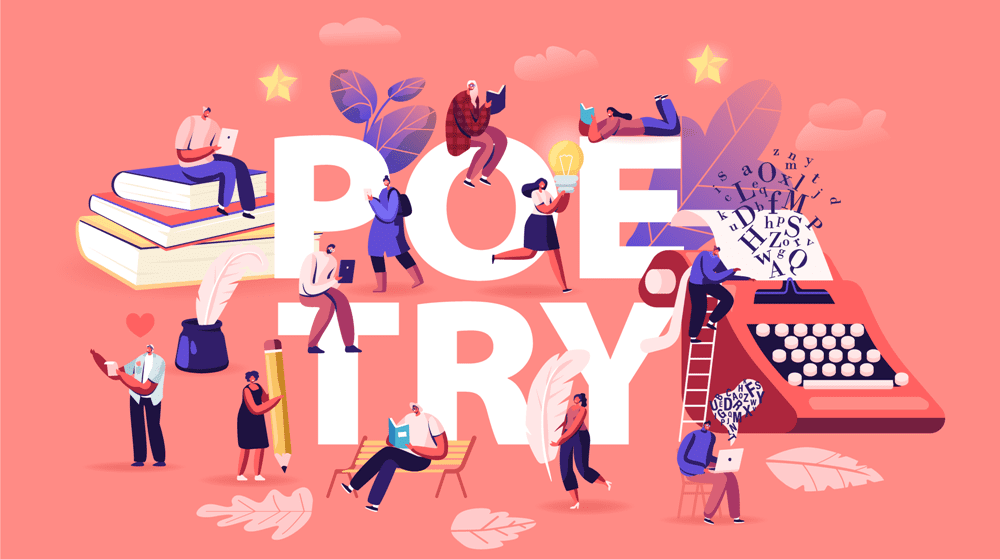Most of us have pleasant memories of the nursery rhymes we learned in kindergarten and other school classes. Such as “Johnny Johnny yes papa,” “twinkle twinkle little star,” “Humpty Dumpty,” etc. These rhymes forced us to acquire some fundamental yet significant ideas. In actuality, rhymes are a type of poetry that serves as a building block for future education. Every alternate line of rhymes ends with a word that rhymes, which is its defining feature. Poems and rhymes are both examples of poetry. As opposed to prose, both are considered to be forms of poetry. Because of how similar rhyme and poetry are, most people have trouble telling them apart. But there is a difference between poem and rhyme. This essay will focus on the minor variations that exist between a rhyme and a poem. But before focusing on the difference between poem and rhyme, let us first understand their meaning. A good understanding of their meaning will help in a better analysis of the differences between the two.
Mugafi Ved – AI Storywriting tool
What is a poem?
In a poem, the words are skillfully chosen and arranged to produce the desired emotional impact. A poem, according to poet Percy Bysshe Shelly, is “the manifestation of the imagination.” A poem develops when “an emotion has found its thought, and the thought has found words,” according to Robert Frost.
The writing style of a poem differs from that of prose. In contrast to prose, which lacks the constraining of words, this form of expression is contemplative and conveys profound and emotional meaning in little words. A poem is a hybrid of speech and song since it frequently has a rhythm and employs metaphors to take readers to unfamiliar settings. The poet’s imagination is crucial in a poem since it allows him to transport the audience to a different time and place. In order to convey a deeper meaning, ideas and feelings are expressed in poems using metaphors rather than straightforward language.
Mugafi Ved – AI copilot for writers
A poem is a group or collection of words that express meaning musically. A poem is a composition with lines arranged in stanzas. Though short poems are popular and well-liked by poetry fans, there is no word count restriction in poetry.
Components of a Poem
Poetry is a verbal art form. Instead of using sentences and paragraphs, poetry uses lines and stanzas to organize its words. Lines and stanzas provide areas to pause and rest pauses for the reader to examine a change in subject matter, which adds to the visual aspect of a poem and improves the reader’s overall experience. Poetry’s ability to make a powerful effect with few words is another distinguishing feature. In order to create vivid images and pack meaning into each line, the poet makes careful use of word combinations and literary tricks.
What is a Rhyme?
The correspondence of two or more words with similar-sounding end syllables set so as to echo one another is known as rhyme, sometimes spelled rime. Poets, and occasionally prose authors, utilize rhyme to create sounds that appeal to the reader’s senses and to unite and establish the stanzaic shape of a poem. While internal, interior, or leonine rhyme is frequently used as an occasional embellishment in a poem—for example, William Shakespeare’s “Hark; hark! The lark at heaven’s gate sings”—or as part of the regular rhyme scheme, end rhyme, which is rhyme used at the end of a line to echo the end of another line, is the most typical.
The practice of using words with similar sounds at the ends of lines in a text is known as rhyme. But some poetry that uses rhymes, like the well-known nursery rhymes, are also referred to as rhymes. There is more to rhymes than merely the employment of words with similar sounds at the ends of lines, which is how rhymes are identified. To make the poem easier for his listeners to read, the poet uses rhyming terms. Rhymes are simpler to memorize and recite in shorter paragraphs. Additionally, this explains why it is simpler to set rhymes to music. Children and adults alike can sing rhymes to improve mood because rhymes are uplifting.
Purists accept three rhymes as “real rhymes”:
- Masculine rhyme: two words end with the same vowel-consonant combination.
For example – end / friend
- Feminine rhyme (also known as double rhyme) consists of two syllables that rhyme.
For example – profession / corrosion
- Trisyllabic rhyme consists of three syllables that rhyme.
For example – resonate/ passionate
Difference between poem and rhyme.
Rhyme is a subset of poetry. Poetry is wider in scope. Though they may be interpreted as the same, there is a difference between poem and rhyme. Poems may or may not consist of rhyming. On the other hand, every poem is not a rhyme.
- A poem may or may not rhyme, but a rhyme is different from that of a poem. It can be distinguished by the usage of words with a similar sound at the conclusion of different lines.
- Children learn and understand concepts more readily when rhymes are included in the instruction.
- Rhyme is simply one of the many aspects found in poetry.
- Although not all poems are rhymes, all rhymes are poems.
- Poems express deeper meaning and are more deliberate than rhymes. While rhymes can be associated with not much-complicated literature. On the split side, a poem can be interwoven with complex phenomena containing various components.
I hope this would have given you a certain clarity about the difference between poem and rhyme.

